Exploring Medieval Paris – Visit The Top Five Architectural Highlights
Although the city was founded 2,000 years ago, there's not much left from medieval Paris. After the end of Roman rule (around 500 CE) there were a few centuries of turmoil during which fires and attacks by invaders left very little architectural evidence from the era. Given that the majority of buildings were made out of wood, the fires caused a lot damage.
But, let's travel back in time to the 11th and 12th centuries, just before the modern era began, to explore medieval Paris — from the little-known to world-famous works of architecture. Grand cathedrals were built, royal palaces erected, and the last defensive wall around the city was raised. From the ethereal beauty of La Sainte Chapelle to the Hotel de Cluny, here are the top five remaining highlights of medieval Paris.
![]()
Discover What's On When You're Here...
• January... |
• February... |
• March... |
• April... |
• May... |
• June... |
• July... |
• August... |
• September... |
• October... |
• November... |
• December... |
Discover What's On When You're Here
• January...
|
• February... |
• March... |
|---|---|---|
• April... |
• May... |
• June... |
• July... |
• August... |
• September... |
• October... |
• November... |
• December... |
1. The Wall of Philippe Auguste
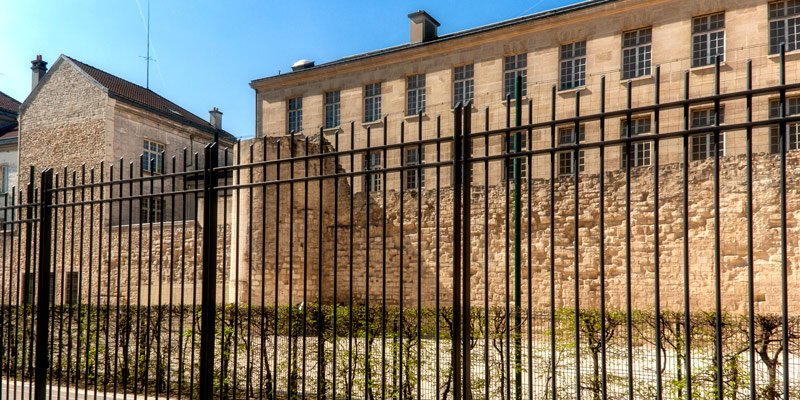
Just a three-minute walk from Metro Saint-Paul in the Marais gets you to Rue des Jardins Saint-Paul. Here you can view the surviving section of the city wall built by French king Philippe Auguste.
Built between 1190 and 1220, this was the last wall to encircle the entire city (the Romans had built a wall around Île de la Cité and later, in the 18th century, a non-defensive tax wall was built). Damage during World War II had the one beneficial side effect of exposing two towers along the wall, which can also been seen today on Rue Charlemagne. The playground next to the wall shows the level of the city during the medieval period. (Centuries of rebuilding and filling have raised the level to what it is today, as you can see from the buildings in back.)
Just a ways further along Rue des Jardins Saint-Paul and a right turn onto Rue de l'Ave Maria is where you find Hotel de Sens. This Gothic structure is one of only two surviving medieval residences in Paris, the other is Hotel de Cluny, which today houses a museum of the Middle Ages.
Across Pont Marie, on Île St. Louis, there certainly are old buildings, but most of these date from the 17th and 18th centuries. Back in those days the island was mostly uninhabited and, in fact, was created from two separate islands only in about 1615. If you head up to the western end of this island, you can cross the bridge to its older sister, Île de la Cité, settled by the Romans and in continuous occupation since then.
![]()
Our Most Popular Day Trips from Paris
|
Spend a Day in the Champagne Region |
Visit the Historic D-Day Beaches |
|
Visit the Historic D-Day Beaches |
2. Notre Dame Cathedral
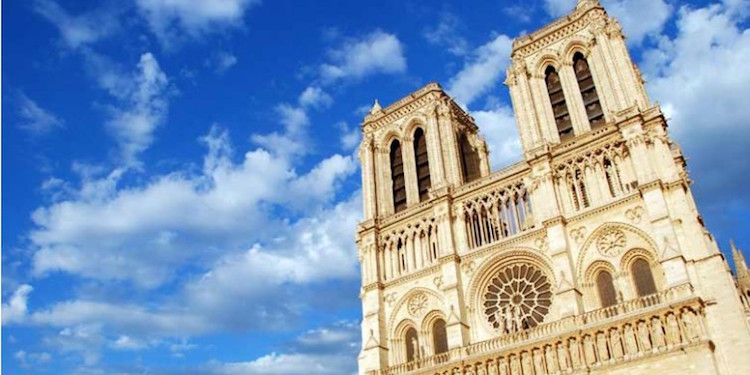
The most famous structure on Île de la Cité (and the most famous medieval building in Paris) is, of course, Notre Dame Cathedral. Construction of the church took almost 200 years; during that time period a variety of Gothic styles and construction techniques were used as building science evolved.
The famous flying buttresses give the cathedral its distinctive look — the first use of this innovative technique in France, setting off a wave of Gothic church building throughout the country. The base of the cathedral's facade was started in the late 12th century and is a another example of early Gothic style. But it wasn't until two hundred years later that the rose window was added.
![]()
The Left Bank Of Paris – Top Things To Do
|
Dinner & Cabaret at Paradis Latin Theater |
Chocolate & Pastry Walking Tour of Saint-Germain-des-Prés |
The Left Bank Of Paris
|
Dinner & Cabaret at Paradis Latin Theater |
3. Conciergerie
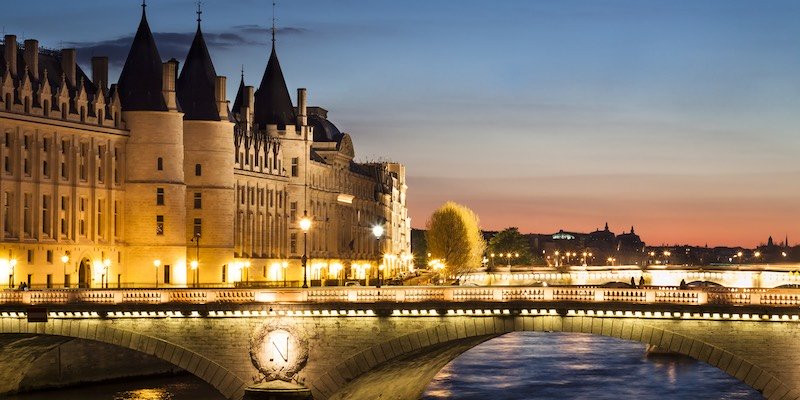
Five minute's walk from Notre Dame brings you to the Conciergerie, also on Île de la Cité. This was the headquarters of French kings from the 10th to the 14th centuries. Although built in the medieval period, all that remains of the original royal palace is a large rooms in the lower level, known as the Hall of the Guards.
The Hall of the Guards was the dining room for the 2,000-member staff of the royal palace. The size of this room gives you an idea of how big was the Great Hall that formerly stood directly above it. Four large fireplaces heated the hall and vaulted columns were added to support the later 18th-century reconstruction on top, after a fire destroyed most of the original building.
By the 14th century the kings had moved across the river to the Louvre, and the old royal palace was transformed into a prison. The Conciergerie was an unhappy address during the French Revolution — those awaiting trial and execution were held here. One famous prisoner was Marie Antoinette.
![]()
Romantic Dinner Cruises In Paris
|
VIP Dinner Cruise with Bateaux Parisiens |
Dinner Cruise by Maxim's of Paris |
|
VIP Dinner Cruise with Bateaux Parisiens |
4. La Sainte Chapelle
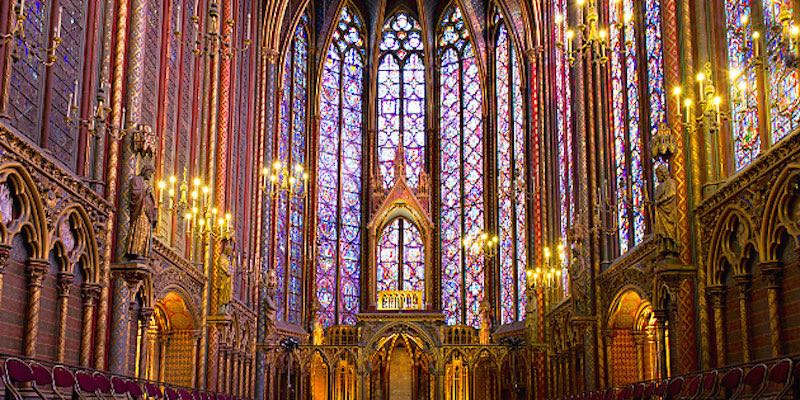
Next to the Conciergerie, and in the same complex that today includes the Palais de Justice, is the airy Gothic marvel of a church, La Sainte Chapelle. In contrast to Notre Dame's very long construction period, Sainte Chapelle was completed in a mere six years. Built on the order of Louis IX, he was impatient to have a church to house the saintly relics he had obtained from the "emperor" at Constantinople (of a state just recently founded by Crusaders). Among his other "treasures" was the supposed Crown of Thorns.
La Sainte Chapelle was built in the Gothic style known as Rayonnant, where buildings were taller, windows were larger, and before flying buttresses and rose windows were invented. The result is a spectacular space, surrounded by 50-foot-high stained glass windows. This room connected directly to his majesty's bedroom in the royal palace.
There is a rose window at La Sainte Chapelle, but it was added later, when the original wall collapsed. The stunning vaulted lower chapel was built for servants of the royal household.
5. Hotel de Cluny
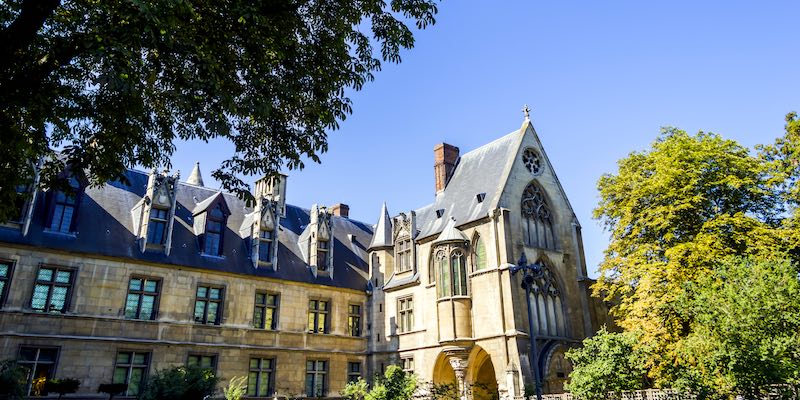
From La Sainte Chapelle, Pont Saint-Michel takes you across the river and along the boulevard of the same name to a former abbey now known as Hotel de Cluny. Set on the ruins of the 3rd-century Roman baths, the Hotel de Cluny is one of the best examples of medieval architecture in Paris. Built between 1485 and 1510, the Cluny combines elements of the Gothic period with some Renaissance flairs.
Today, the Hotel de Cluny and the Roman baths are home to the Musée National du Moyen Age, where medieval life and art can be explored.
![]()
Delicious Activities in the Marais
|
Marais Food & Wine Tour |
Cheese & Wine Tasting in a Paris Cellar |
|
Cheese & Wine Tasting in a Paris Cellar |
A Two-Minute History of Medieval Paris
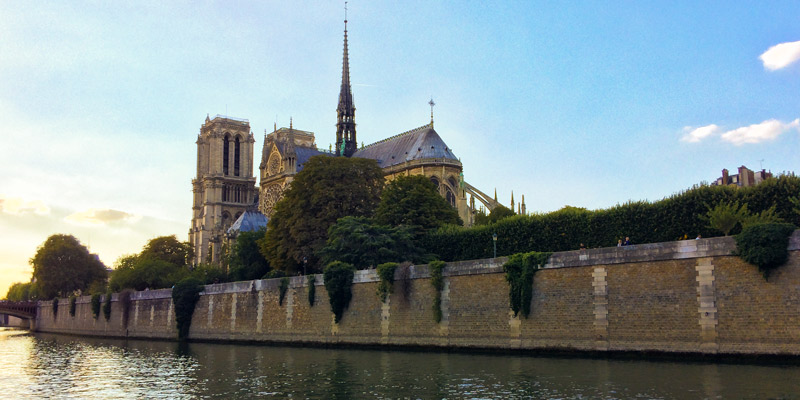
You may have forgotten your medieval Paris lessons (silly you), but in 987 the city became the capital of the Capetian dynasty. This powerful monarchy lasted in one form or another for 800 years and expanded control over the larger region of France. With the peace and power the Capetians brought came education, religion, and a strong royal family.
It would take a few centuries , but great works of medieval architecture such as Notre Dame, the wall of Philippe Auguste, the Conciergerie, and even the Louvre fortress would be built or begun under the Capetians. They ruled until the last true Capetian king, Charles IV, died in 1328. Between the 12th and 15th centuries Paris flourished and developed into a beautiful city with elegant examples of Gothic architecture.
Paris Planning Guides
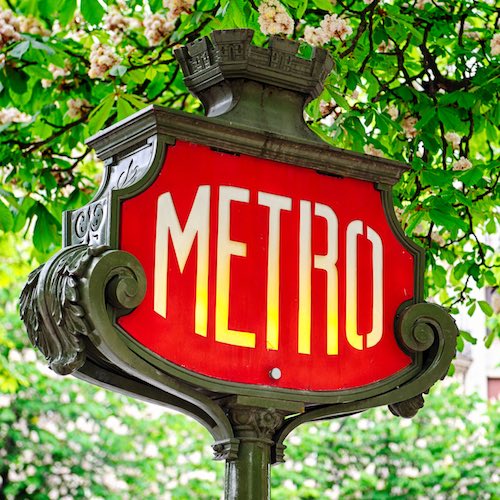 Paris Metro Guide
Paris Metro Guide |
 Top Left Bank Hotels
Top Left Bank Hotels |
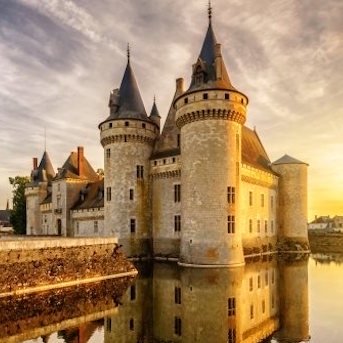 Visiting the Loire Valley
Visiting the Loire Valley |
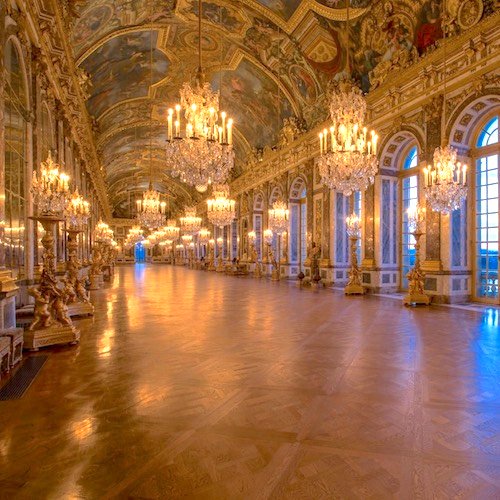 Visiting Versailles
Visiting Versailles |













